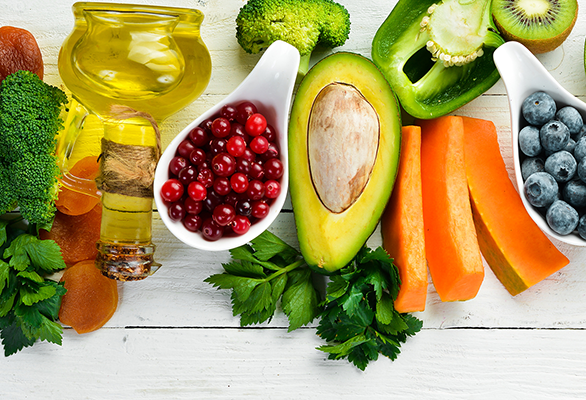As we look at national and international trends in food and nutrition, we are discovering many new food products being introduced in the marketplace. As food manufacturers strive to meet consumer demands, they also lead the way in presenting new products and flavors to the American consumer.
While grocery shoppers used to only see global cuisines highlighted in one specific section of the local grocery store, these products from international cuisines can now be found throughout the store, and ingredients that span the globe are just a click away.
What Spices and Flavorings Will We See in 2025?
- Consumers will find a wider variety of flavorings native to other countries popping up in entrees and snack foods, including new and inventive ways to use tamarind, lemongrass, and turmeric.
- Grain products, traditionally made with wheat or corn, now contain root vegetables like cassava (also known as manioc or yuca). In fact, a recent international foods show introduced tortillas made from cassava.
- While diverse types of nut butter have gained popularity as new food products in the last few years, tahini, the paste made from sesame seeds, is becoming more familiar to the average consumer.
What will be the vegetable darling of the year?
While we have seen kale, cauliflower, and brussels sprouts steal consumers’ attention in the past, trendy vegetables on the menu for 2025 include kalettes (picture a kale and Brussels spout mix), kelp, broccolini, purple sweet potato, and sea asparagus (known as samphine).
What is Ancient Grain?
Ancient grains support daily energy needs for many cultures across the planet, and they have grown in popularity for American shoppers in the last decade. Grains like amaranth, freekeh, teff, quinoa, and black rice are not only familiar to students, but they may also be regularly consumed at home. A good example of this is fonio, a common West African grain not often seen in US products. This form of millet is a very drought-resistant crop. Look for its arrival to the US in plant-based patties, side dishes, and in bulk.
Mushrooms Bring the Umami
Consumers interested in following a plant-based diet continue to be interested in using mushrooms to bring umami flavor to meat-free dishes. New products incorporating mushrooms are expanding beyond the traditional white button variety, turning to exotic mushroom delicacies such as Lion’s Mane, shiitake, and chanterelle. Whether it is mushroom jerky, mushroom beverages, or plant-based entrees, mushrooms have found their place as a source of flavor and nutrition.
Food Trends Celebrate Global Flavors
Just like in American grocery stores, where global flavors are presented alongside traditional, well-known flavors, the authors of Guide to Good Food: Nutrition and Food tackled the 16th edition of their textbook in a comparable way. Rather than focusing on international foods in a single section, the authors incorporate the global flavors that students eat daily at home into every chapter of the textbook. Compared to students 20 years ago, today's American teens are not only familiar with sushi and ramen, but they may also choose to opt for these flavorful options at breakfast. The Global Connections features in the textbook highlight how certain foods like peppers, eggs, and coffee are celebrated and consumed in many diverse cultures.
Trends in food and nutrition continue to evolve, and it is imperative that food manufacturers and the marketplace keep up with the latest consumer demands. It is also important that today’s students learn about recent trends in food and nutrition, and thanks to coauthors Velda L. Largen and Deborah L. Bence, schools across the country can look to Guide to Good Food: Nutrition and Food Preparation to lead the way.





